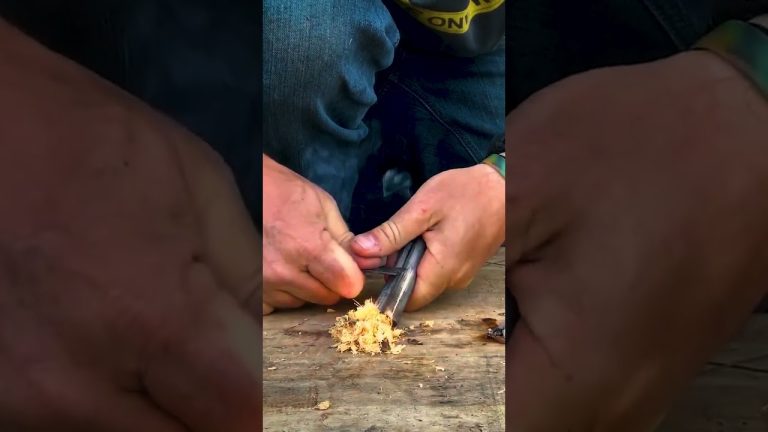An African native that thrives in subtropical gardens, cranberry hibiscus is showy, edible, easy-care and quick to establish. A valuable plant in any type of garden, cranberry hibiscus will appeal to ornamental and food gardeners alike.
What is Cranberry Hibiscus?
Thought to be a hybrid of two wild species, the exact origin of cranberry hibiscus is unknown. Despite this, it has its own species name, Hibiscus acetosella. This plant acts as a short-lived perennial shrub in the subtropics and tropics, but can be grown as an annual in cooler climates. It grows rapidly to 2m high (ask me how I know!), with delightful, maple-like red/purple leaves. The flowers look much like a miniature hibiscus, and are a dark pink.
Cranberry hibiscus is a hardy plant that thrives in warm, wet conditions; which is to say, a humid subtropical climate. It is a short-lived perennial, fast-growing yet easy to keep under control. For this reason, it is ideal in a low-maintenance food forest.
How to Use Cranberry Hibiscus
Cranberry hibiscus leaves are edible and very nutritious. They are an excellent source of antioxidants and anthocyanins, plus are high in protein, vitamins B3 (aka niacin), B2, A and C. The young leaves are known for their pleasantly tart flavour, and can be eaten either raw or cooked. Due to their oxalic acid content, cranberry hibiscus should not be eaten in large amounts; a few leaves in a salad once or twice a week is sufficient.
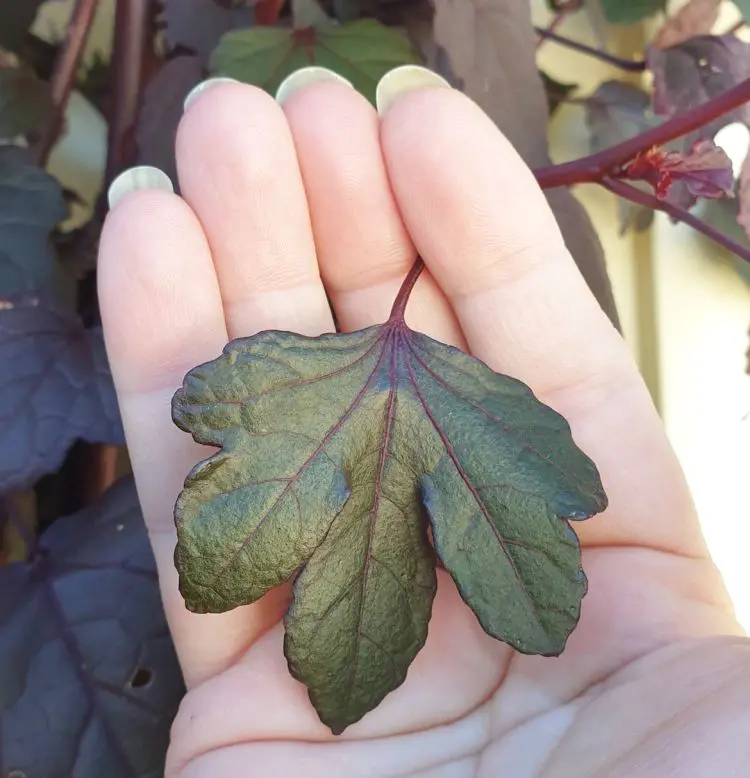
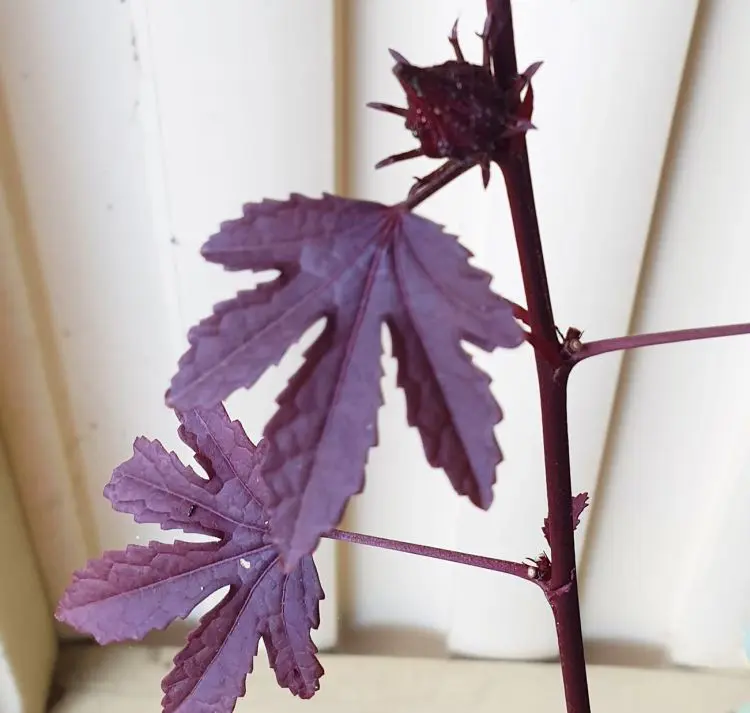
The leaves of cranberry hibiscus leaves can also be brewed into a tea, as can the flowers, where they contribute colour rather than taste. In Central America the flowers are combined with ice, sugar, citrus juice & water to make a sort of coloured lemonade.
Food value aside, cranberry hibiscus is an attractive ornamental with many benefits to all types of gardens. Its ability to grow and establish quickly has great value in young gardens, and its relatively sparse habit makes it ideal for providing dappled shade. Permaculture gardens, too, find cranberry hibiscus very valuable. The vivid leaf colour often provides excellent colour contrast, which makes this a good choice as a background plant in ornamental beds. Its sizeable flowers provide nectar for pollinators, and its medium height suits food forests.
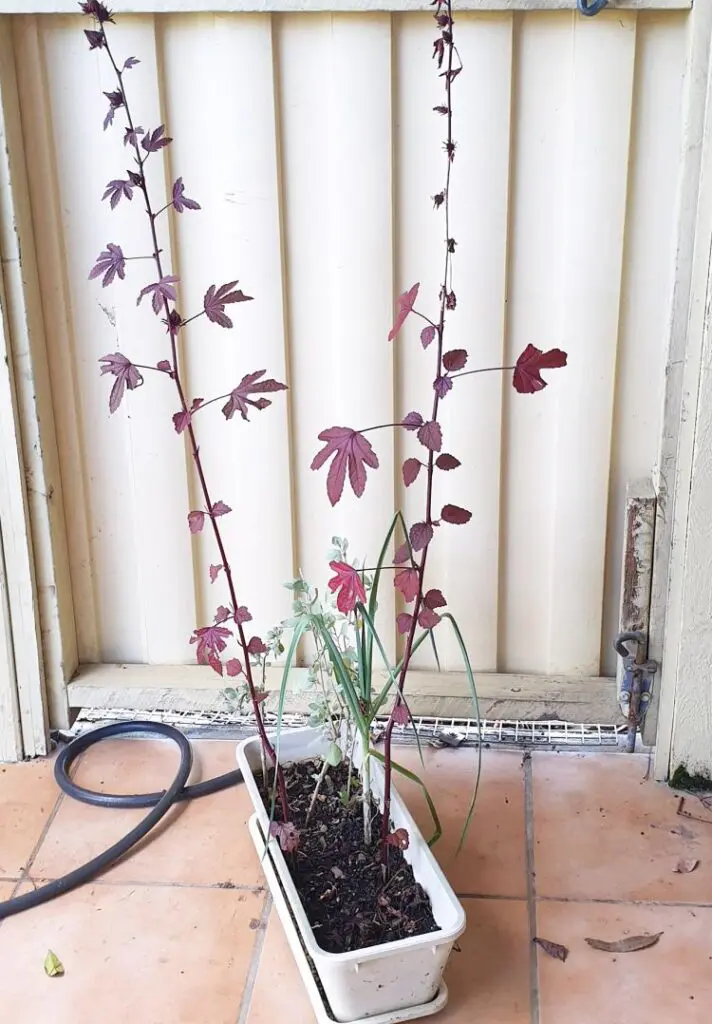
How to Start Cranberry Hibiscus
Cranberry hibiscus will grow from seed, but is very easily propagated via cuttings. All you need to do is take a stem cutting of around 15 cm (7?) long, and bury it in some moist, free-draining potting mix. Keep the soil warm, and keep the cuttings in part shade.
This plant grows easily, so there is no special treatment required. Propagation is best done in the warmer months, because soil warmth is an important factor in stimulating growth. Here in seQLD that’s from approximately September until March, depending on your microclimate.
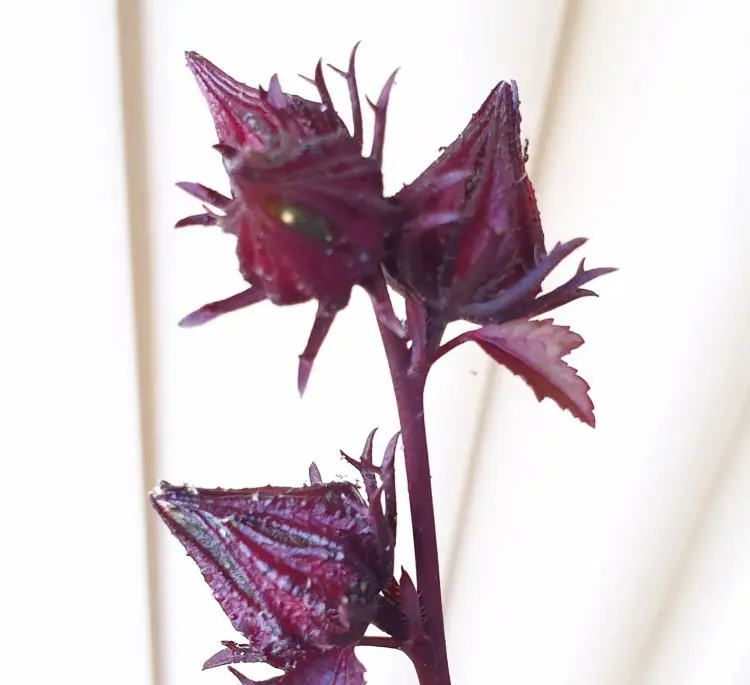
Growing Conditions
The ideal growing conditions for cranberry hibiscus is a full sun position with plenty of water and rich, fertile, well-drained soil that is kept mulched with a pH of between 6.1 and 6.5. Having said that, this is an unfussy plant that is quite hardy and can cope with a variety of conditions in the right climate zone. Once established, intermittent watering, clay soil and shade will not deter your cranberry hibiscus; mine, for example, grows perfectly well in a pot in full shade with precious little attention.
In temperate climates, cranberry hibiscus will grow as an annual, and more slowly (if you’re in USA, that’s zones 8-11). Any colder than this, you’ll probably need to start them indoors and grow in a protected space like a greenhouse. Note that hard frosts will kill this plant. Those grown in shade will show mature leaves of a green/purple colour, while those in full sun will develop deep purple leaves.
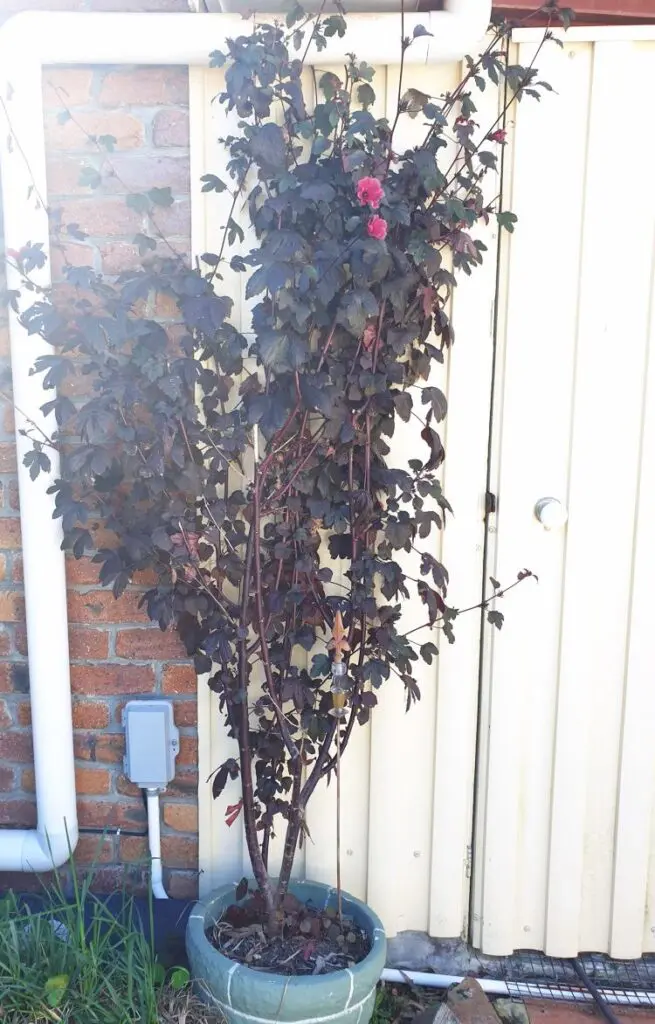
Ongoing Care
Cranberry hibiscus is a very easy plant to keep in your garden, providing you live in its ideal climate zone. You can add a little fertiliser every 3 months or every 6 months, but don’t overdo it, as too much nitrogen will lead to great foliage but no flowers. Water-wise, as long as it doesn’t become flooded nor completely starved of water, cranberry hibiscus will be just fine. The occasional bout of forgetfulness or burst of heavy rain will definitely be forgiven by this showy shrub.
Cranberry hibiscus is easy to maintain. While its initial growth is quick, the growth rate will taper off, and the foliage is quick & easy to cut back. Mine, shown above, has been cut back and tied up several times, and it still grows happily. If left unchecked, the foliage will develop an open habit which can look leggy & straggly. For this reason, it’s a good idea to prune regularly. Regular pruning encourages branching, new growth, and a stronger plant in the long term.
















